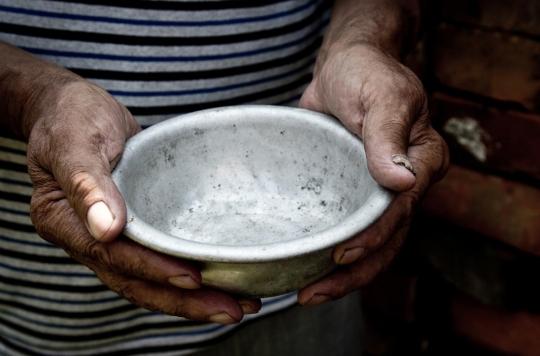According to a UN report, the Covid-19 pandemic will cause an additional 130 million people to go hungry around the world.

- The Covid-19 pandemic could lead to an additional 130 million people going hungry by the end of 2020
- “Asia has the highest number of people suffering from hunger, but it is in Africa that the number is growing fastest”
- The new coronavirus accentuates the inadequacies of global food systems
In his latest edition of The state of food security and nutrition in the world, The Food and Agriculture Organization of the United Nations (FAO) estimates that famine in the world, already on the rise for several years, could be accentuated due to the Covid-19 pandemic.
130 million more hungry people by the end of 2020?
PAlmost 690 million people suffered from hunger in 2019, more than 10 million than in 2018 and almost 60 million than in 2014. According to the UN, the devastation caused by the new coronavirus could lead to more than 130 million more people to go hungry by the end of 2020.”If the trend continues, it is estimated that by 2030, this number will exceed 840 million people. This clearly means that the goal (to eradicate hunger by 2030, established by the UN in 2015) is not on track to be achieved”commented Thibault Meilland, policy analyst at FAO.
As the highlighted the World Health Organization (WHO)whose expertise was required for the drafting of this report, “vst is in Asia that people who suffer from hunger are the most numerous, but it is in Africa that their number is growing fastest”. In detail, Asia has 381 million undernourished people, Africa 250 million and Latin America and the Caribbean 48 million.
The pandemic in Africa
In parallel, “the Covid-19 pandemic is intensifying the vulnerabilities and shortcomings of global food systems, i.e. the set of activities and processes that affect the production, distribution and consumption of food”. The inequality of African health systems and the differences in population density make the situation worrying, especially since the progression of the virus is accelerating on the African continent: South Africa is the most affected African country with 220,000 confirmed cases and 3,600 deaths. Algeria, whose hospital services are saturated, has exceeded 1,000 dead.
In addition, the absence of screening in many countries makes it difficult to count the number of patients, in particular because of “invisible cases”, “a young population, affected by mild forms, who do not consult and heal on their own after a few days of fever”explains to the newspaper The worldMoumouni Kinda, director of operations of the NGO Alima.
.















